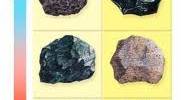According to a recent study headed by Florida State University scientists, the first mass extinction on Earth may have been caused by abrupt shifts in marine oxygen levels.
The Late Ordovician mass extinction, or LOME, which wiped out nearly 85% of marine species, occurred 443 million years ago. The origin of this mass extinction has been investigated extensively by scientists, who are still looking into it. Some of these causes include persistently low oxygen levels in the oceans or reduced habitat loss in a fast cooling globe.
The research team discovered that previously known patterns of this mass extinction coincided with an initial rapid decrease in marine oxygen levels followed by a rapid increase in oxygen by measuring isotopes of the element thallium, which exhibits special sensitivity to changes in oxygen in the ancient marine environment. The journal Science Advances features their work online.
“Paleontologists have noted that there were several groups of organisms, such as graptolites and brachiopods, that started to decline very early in this mass extinction interval, but we didn’t really have any good evidence of an environmental or climate signature to tie that early decline of these groups to a particular mechanism,” said co-author Seth Young, an associate professor in the Department of Earth, Ocean and Atmospheric Science.
The discovery of the initial expansion of low-oxygen conditions on a global level and the coincidence with the early phases of decline in marine animals helps paint a clearer picture of what was happening with this extinction event.
Nevin Kozik
“This paper can directly link that early phase of extinction to changes in oxygen. We see a marked change in thallium isotopes at the same time these organisms start their steady decline into the main phase of the mass extinction event.”
That decrease in oxygen was immediately followed by an increase. This sudden change in oxygen occurred at the same time as the typical initial die-off of a mass extinction and a significant expansion of the ice sheet over the former South Pole.
“Turbulence in oxygen levels in oceanic waters is really what seems to have been pretty problematic for organisms that were living in the Late Ordovician at that time, which might have been adapted to cope with low oxygen conditions initially or vice versa,” Young said.
“The fact that oxygen levels in the oceans next to the continents switching back and forth over short geologic time scales (a few hundred thousand years) really did seem to play havoc with these marine ecosystems.”
One of the five significant mass extinctions in Earth’s history, the Late Ordovician extinction is the only one that experts are certain occurred in an environment known as a “icehouse,” where ice sheets cover much of the planet’s surface.
This past mass extinction is a crucial analog for the icehouse conditions and biodiversity loss that Earth is currently experiencing, as well as for trying to comprehend Earth’s future as our climate continues to warm and the ice sheets recede.
This study used shales that were deposited in deeper, oxygen-poor water, which record different geochemical signatures. By using these shales, which record evidence from limestones from more oxygenated settings, the researchers were able to draw conclusions about global marine conditions rather than local conditions.
“The discovery of the initial expansion of low-oxygen conditions on a global level and the coincidence with the early phases of decline in marine animals helps paint a clearer picture of what was happening with this extinction event,” said lead author Nevin Kozik, a visiting assistant professor at Occidental College and former FSU doctoral student.
Co-authors on this paper were doctoral student Sean Newby and associate professor Jeremy Owens of FSU; former FSU postdoctoral scholar and current assistant professor at the College of Charleston Theodore Them; Mu Liu and Daizhao Chen of the Chinese Academy of Sciences; Emma Hammarlund of Lund University; and David Bond of the University of Hull.
















